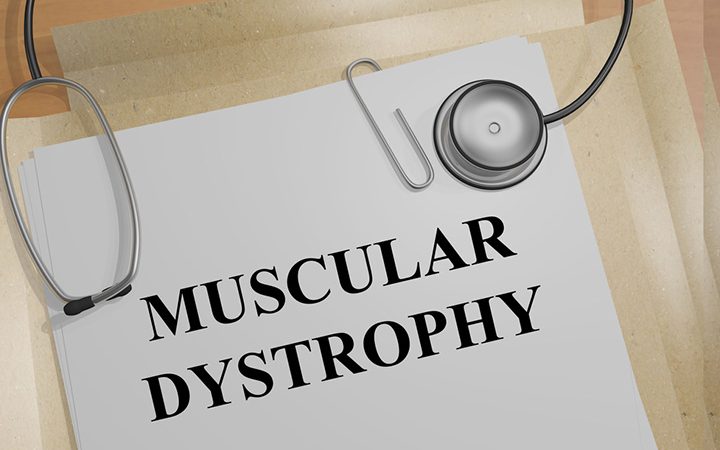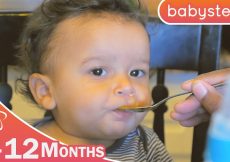Muscular dystrophy is a term used to describe different skeletal muscle disorders that lead to weakness and loss of muscle mass (wasting) (1). There are several types of muscular dystrophies. While some of them appear in childhood, a few are not seen until adulthood.
The experts at Muscular Dystrophy Association explain that muscle weakness that begins in infancy or early childhood (before the age of two) is termed congenital muscular dystrophy(CMD) (2).
Read this post to learn more about the different types, symptoms, causes, risk factors, diagnosis, and treatment of congenital muscular dystrophy in babies.
Causes And Risk Factors For CMD
CMD happens due to an abnormal gene that may be inherited from either of the parents (1 ). Genes for muscular dystrophy can pass even when parents are asymptomatic. Various gene abnormalities can cause a baby to be born with muscular dystrophy. There are 30 identified types of congenital muscular dystrophy classified based on the specific gene involved.
According to the National Organization for Rare Disorders, CMD affects males and females equally. However, the exact incidence and prevalence of CMD are unknown (3).
Symptoms Of Congenital Muscular Dystrophy
Babies with congenital muscular dystrophy begin to exhibit any of the following symptoms early in their lives (2).
- Reduced muscle tone (hypotonia)
- Progressive muscle weakness
- Muscle degeneration
- Restricted joint movement (joint contractures)
- Babies appear floppy when lifted in arms
- Lesser frequency and intensity of spontaneous movements such as kicking or waving
- Difficulties in raising head or rolling over
- Delays in reaching milestones such as sitting or standing unassisted
- Feeding difficulties
- Respiratory complications
- Structural brain defects
- Evident learning disabilities with increasing age
- Spinal curvatures
- Spinal rigidity
- Respiratory insufficiency
- Eye defects
- Seizures
Diagnosis Of Congenital Muscular Dystrophy
The following steps are included in the diagnosis of muscular dystrophy in babies (2).
- Family history
- Physical examination
- Nerve conduction studies and electromyography (EMG) might be performed to pinpoint the origin of weakness.
- Blood tests may be done to assess creatine kinase (CK) levels in the blood. Creatine kinase leaks from damaged muscle. Elevated CK levels pinpoint to a damaged muscle.
- Muscle biopsy may be performed to identify the disease that is causing CK elevation.
- MRI of the brain (magnetic resonance imaging) may be performed to check for structural brain defects.
- Genetic testing may be performed to check the baby’s genes for particular defects in the genes that cause CMD.
Treatment For CMD In Babies
CMD is a progressive and untreatable condition. Treatment of CMD is symptomatic, focuses on improving the quality of life, and includes the following (1).
- Medicines for relief from symptoms
- Physical therapy to strengthen the weak muscles
- Respiratory therapy for breathing difficulties
- Occupational therapy to help with the issues of swallowing
- Behavioral therapy to help with the cognitive function
- Diet and nutrition counseling for babies with feeding difficulties
The management of CMD is a multidisciplinary approach. A team of pediatricians, pediatric neurologists, pediatric surgeons, orthopedics, cardiac specialists, ophthalmologists, psychiatrists, speech pathologists, and other healthcare professionals are involved in the process.
Parents may also contact local CMD support groups or organizations that can provide more information on the management of the condition. Support groups may also provide you details related to therapists that specialize in physiotherapy for babies with CMD. You may also find more information about mobility-related equipment, such as walkers or wheelchairs, that the babies with CMD may need as they grow older.
When To See A Doctor?
You must contact the doctor if you notice any worsening of the existing symptoms or new symptoms such as:
- Signs of respiratory infection
- Feeding problems
- Choking
- Problems with swallowing
- Muscle pain
- Increased floppiness
Congenital muscular dystrophy is a lifelong condition. If you have a family history of muscular dystrophy, you may consider genetic counseling and testing before pregnancy. If your child is diagnosed with CMD, regular medical checkups are essential. Consider contacting various support groups since psychosocial support is essential for the entire family.
References:
MomJunction’s articles are written after analyzing the research works of expert authors and institutions. Our references consist of resources established by authorities in their respective fields. You can learn more about the authenticity of the information we present in our editorial policy.



































